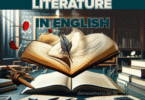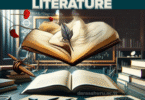ELEMENTS OF LITERATURE – CONTENTS
B) CONTENT
Content refers to what is being said or conveyed in a literary work. It also refers to what is being described in the literary work. In literature, content includes the following elements;
a) Theme
A theme is a central or dominant idea or purpose in a literary work. It is usually stated in a statement form. It is the abstract concept that is made concrete through its representation in a person, action and image in the work of art.
The common themes in African literature include betrayal, African traditions, colonialism, position of women, corruption, classes, racial segregation, protest, neo-colonialism etc.
Themes are categorized into two types which are;
- The main or major themes
- The minor themes
Any literary work has only one main theme which is built by the minor ones. Therefore, minor themes are the builders of the main themes.
b) Message
A message refers to what is learnt from a literary work. A message we get from literary work is about our experience in life. The writer typically writes to accomplish one or more of the following;
- To persuade
- To criticize
- To inform
- To explain
- To entertain
- To describe
- To tell a story
c) Conflict
A conflict is the struggle, quarrel, or misunderstanding between the characters in a work of art. Conflicts build up a certain amount of suspense that makes the reader to desire the knowing of what and how the next event will happen.
Types of conflicts
Economic conflict: it a type of conflict from which characters are portrayed differing in interests, opinions, beliefs and ideas because of having some ambitions over a certain economic wealth. For example, land or property ownership conflict.
Philosophical conflict: it is a type of conflict used in literature to mean the author’s belief on the work he/she has written to the Therefore, it is the conflict between the author and the audience.
Political conflict: it is the type of conflict from which characters are shown in disagreement which is resulted from ambition of power, misuse of power or dictatorship. For instance, the ruling party versus the opposing party or citizens versus their government.
Social conflict: it is the type of conflict in which characters from a certain class can be shown opposing the other For example, the educated versus the uneducated, the poor versus the rich etc.
Family conflict: it is the type of conflict in which characters who are family members are shown differing in ideas, interests, opinions as well as For example, parents versus children, one family versus another family etc.
Personal or intra-personal conflict: it the type of conflict in which a character is portrayed regretting upon his or her act, choice or Personal conflict can be easily identified as the character is in dilemma over some matters.
d) Climax
Climax is the term used to refer the part of the story or any literary work where the tension or action reaches its highest point.
e) Moral lesson
Refers to the teachings a reader gets from a literary work. It usually moral teaching that the literary conveys to the intended reader or audience.
f) Philosophy
It is the belief or stance of a writer which is resulted from citing some realistic beliefs in human experience. For example, a writer may have the philosophy that in life, to be prosperous we need peace and love.
g) Crisis
It is the darkest or difficult time when a disaster’s tough decision needs to be made or given to rescue a situation. Climax is the result of crisis.
Quiz 1: “Writing literature in local language is the only way to make sure that it reaches every individual in the society. Argue for or against this statement. Give eight (8) points.
Quiz 2: The subject of literature is different from other subject taught at school.
What are the differences between literature and other subjects in the secondary school curriculum?
Quiz 3: Support the view that the society makes literature and literature holds Society.
Quiz 4: show how literature is the reflection of life. Give six (6) points.



